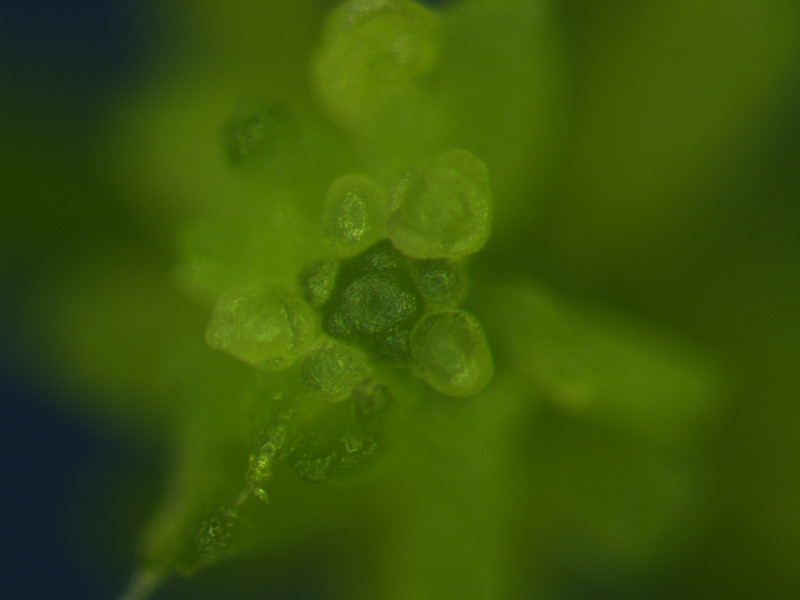Iodine in Plants

Iodine deficiency is a widespread micronutrient malnutrition problem, and the addition of iodine to table salt represents the most common prophylaxis tool. The biofortification of crops with iodine is a recent strategy to further enrich the human diet with a potentially cost-effective, well accepted and bioavailable iodine source. Understanding how iodine functions in higher plants is key to establishing suitable biofortification approaches. Although essential for animals and strongly accumulated in marine algae, iodine is not considered a micronutrient for higher plants, but an increasing number of studies shows that it is involved in plant physiological and biochemical processes.
In recent years, we used a molecular approach to investigate how the ability of a plant to accumulate iodine can be influenced by different mechanisms. In particular, our experiments showed that the iodine content in plants results from a balance between intake and retention, and can be increased either by facilitating its uptake, for example through the overexpression of an ectopic transporter, or through the reduction of its volatilization, process which naturally happens from many plant tissues.
Our present activities focus on the silencing of the genes encoding for the halide methyltransferases, which are key plant enzymes responsible for the volatilization of iodine as methyl iodide. To do this, we used a CRISPR/Cas9 genome editing technique and applied it to rice, representing both a major staple crop and one of the most important methyl iodide emitters. A correct manipulation of this mechanism could improve iodine biofortification of rice crop and prevent the release of the ozone layer-threatening methyl iodide into the atmosphere.
Publications
-
C. Kiferle, S. Gonzali, H.T. Holwerda, R. Real-Ibaceta, P. Perata
Tomato fruits: a good target for iodine biofortification
Frontiers In Plant Science; N. 4; 1:10 (2013) -
M. Tonacchera, A. Dimida, M. De Servi, M. Frigeri, E. Ferrarini, G. De Marco, Lucia Grasso, Patrizia Agretti, P. Piaggi, F. Aghini-Lombardi, P. Perata, A. Pinchera, P. Vitti
Iodine fortification of vegetables improves human iodine nutrition: in vivo evidence for a new model of iodine prophylaxis
The Journal Of Clinical Endocrinology And Metabolism; N. 98; 694:697 (2013)
-
M. Landini, S. Gonzali, C. Kiferle, M. Tonacchera, P. Agretti, A. Dimida, P. Vitti, A. Alpi, A. Pinchera, P. Perata
Metabolic engineering of the iodine content in Arabidopsis
Scientific Reports - 2 : 338:344 (2012)
-
M. Landini, S. Gonzali, P. Perata
Iodine biofortification in tomato
Journal of Plant Nutrition and Soil Science - 174 : 480:486 (2011) -
A. Caffagni, L. Arru, P. Meriggi, J. Milc, P. Perata, N. Pecchioni
Iodine fortification plant screening process and accumulation in tomato fruits and potato Tubers
Communications in Soil Science and Plant Analysis - 42 : 706:718 (2011)
Learn more on the iodine physiology in plants by reading "Metabolic engineering of the iodine content in Arabidopsis", published in Scientific Reports. You can download the article here.